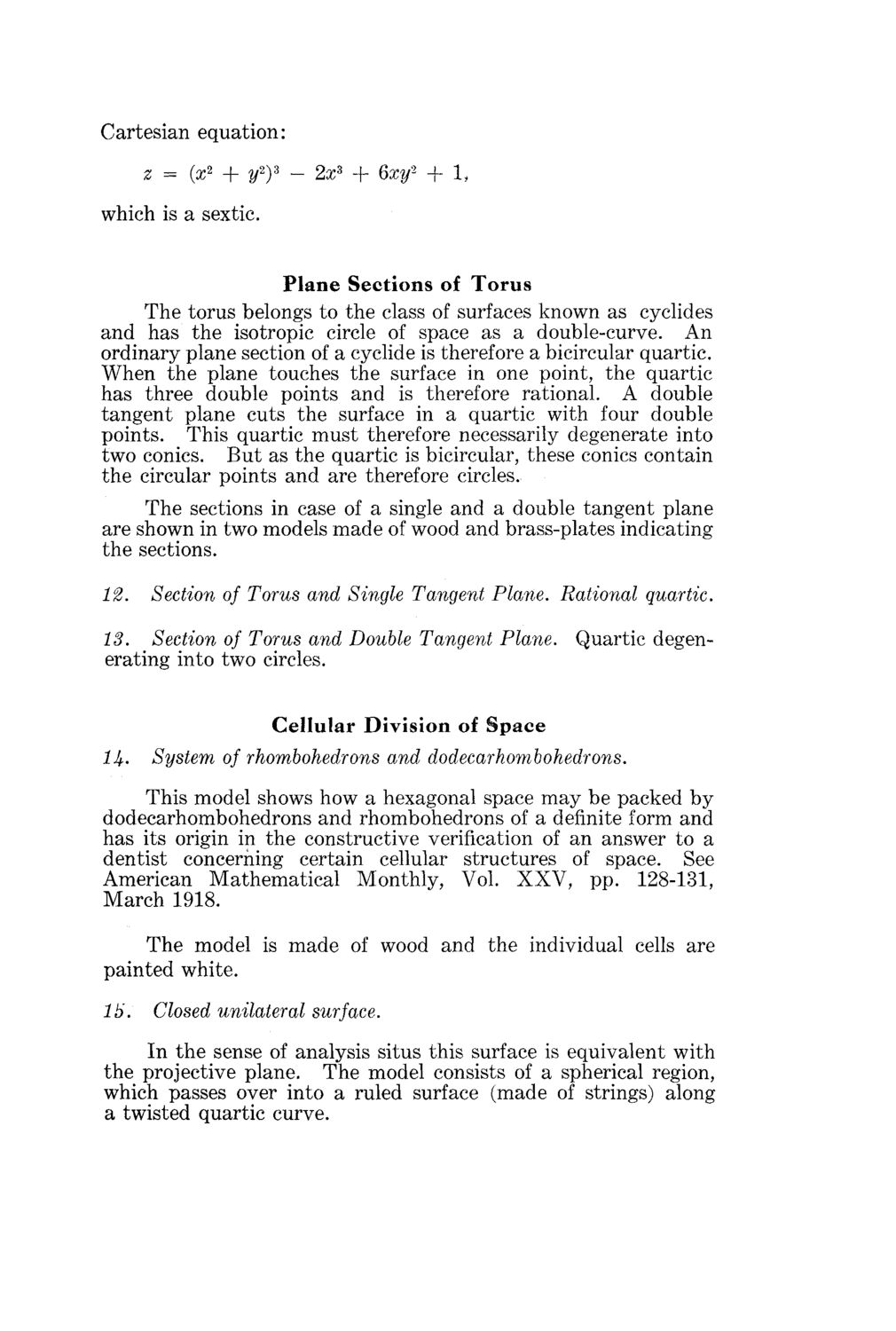Caption: Mathematical Models by Arnold Emch - Series 1 (1920)
This is a reduced-resolution page image for fast online browsing.

EXTRACTED TEXT FROM PAGE:
Cartesian equation: z = (x2 + y2)3 - 2x3 + 6xy2 + 1, which is a sextic. Plane Sections of Torus The torus belongs to the class of surfaces known as cyclides and has the isotropic circle of space as a double-curve. A n ordinary plane section of a cyclide is therefore a bicircular quartic. W h e n the plane touches the surface in one point, the quartic has three double points and is therefore rational. A double tangent plane cuts the surface in a quartic with four double points. This quartic must therefore necessarily degenerate into two conies. But as the quartic is bicircular, these conies contain the circular points and are therefore circles. The sections in case of a single and a double tangent plane are shown in two models made of wood and brass-plates indicating the sections. 12. Section of Torus and Single Tangent Plane. Rational quartic. 13. Section of Torus and Double Tangent Plane. Quartic degenerating into two circles. Cellular Division of Space lb. System of rhombohedrons and dodecarhombohedrons. This model shows how a hexagonal space may be packed by dodecarhombohedrons and rhombohedrons of a definite form and has its origin in the constructive verification of an answer to a dentist concerning certain cellular structures of space. See American Mathematical Monthly, Vol. X X V , pp. 128-131, March 1918. The model is made of wood and the individual cells are painted white. lb. Closed unilateral surface. In the sense of analysis situs this surface is equivalent with the projective plane. The model consists of a spherical region, which passes over into a ruled surface (made of strings) along a twisted quartic curve.
|